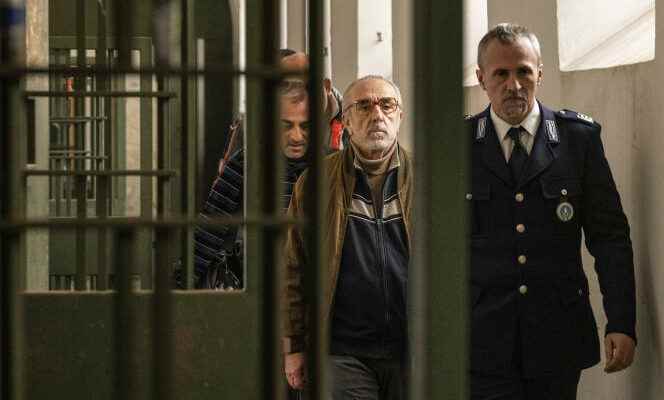THE OPINION OF THE “WORLD” – NOT TO BE MISSED
Here we are in the cinema, but also somewhere in the theatre: imagine a circular, central space, similar to a panoptic surveillance device. On either side, heavy metal doors open onto grilles, behind which prisoners are locked up. Sometimes, these are authorized to leave their cell and there they are who arrive “on scene”; then, when they go back behind the bars, it’s a bit like going backstage…
Constantly installing doubt on space, the choreography ofAriaferma, by the Italian Leonardo Di Costanzo, alone deserves a chapter. By filming an imaginary place of detention, in a disused prison, the director from the documentary, born in 1958, creates more than a fiction: his film is a utopia examining the possibility of a community between guards and prisoners. Each, in his role, will take the measure of his own confinement.
In the arid mountains of Sardinia, the prison of Mortana (an invented name) is about to be dismantled. Its director is about to leave, but the transfer of the last detainees is suddenly interrupted for administrative reasons. Gargiuolo (Toni Servillo), an experienced goalkeeper, is appointed temporary manager and will have to manage the transition with a handful of colleagues, until the situation is unblocked. Guards and inmates took up their new quarters around the central rotunda. Lagioia (Silvio Orlando), who is serving a long sentence, sees an opportunity to negotiate accommodations under strict regulations.
If the filmmaker manages to make this improbable story believable, it is first of all by taking the time to describe the routine of the protagonists, then to bring out the two characters (Lagioia and Gargiuolo) who, slowly, will disrupt the gears. Without revealing the story, let’s say that it is around the preparation of meals – we are in Italy… – that reinvention takes place.
Fortunately, Ariaferma retains a dryness and mystery that prevent it from turning marshmallow. The jailer does not allow himself to be tamed, even if he takes a step towards the prisoner, agreeing to experiment. “You and I have nothing in common” he lets go, icy, to Lagioia, when he tries to start the conversation. Still, it’s the start of something.
Last bastion
After the first third of the film, the routine mechanics of the prison gradually begin to become distorted, the camera recording from a distance, almost discreetly, the unexpected gestures. Toni Servillo, Paolo Sorrentino’s favorite actor, who played the magnificent socialite in The Big Bellezza (2013), barely grapples here. Gargiuolo never concedes a smile, which would be fatal to the film, by throwing him into the hatch of the feel good movie. But sir is dreaming. His impassive mask seems to be the last bulwark of an institution which, before our eyes, is already being shattered, as if the works of Michel Foucault denouncing panoptic devices had done their work – moreover, in Keep an eye on and punish (Gallimard, 1975), the philosopher already compared places of confinement to “small theaters”, “where each actor is alone, perfectly individualized and constantly visible”. Ariaferma focuses precisely on these micro-cavities and brings out powerful so-called “secondary” characters, some of whom are interpreted by former prisoners.
You have 30.16% of this article left to read. The following is for subscribers only.
